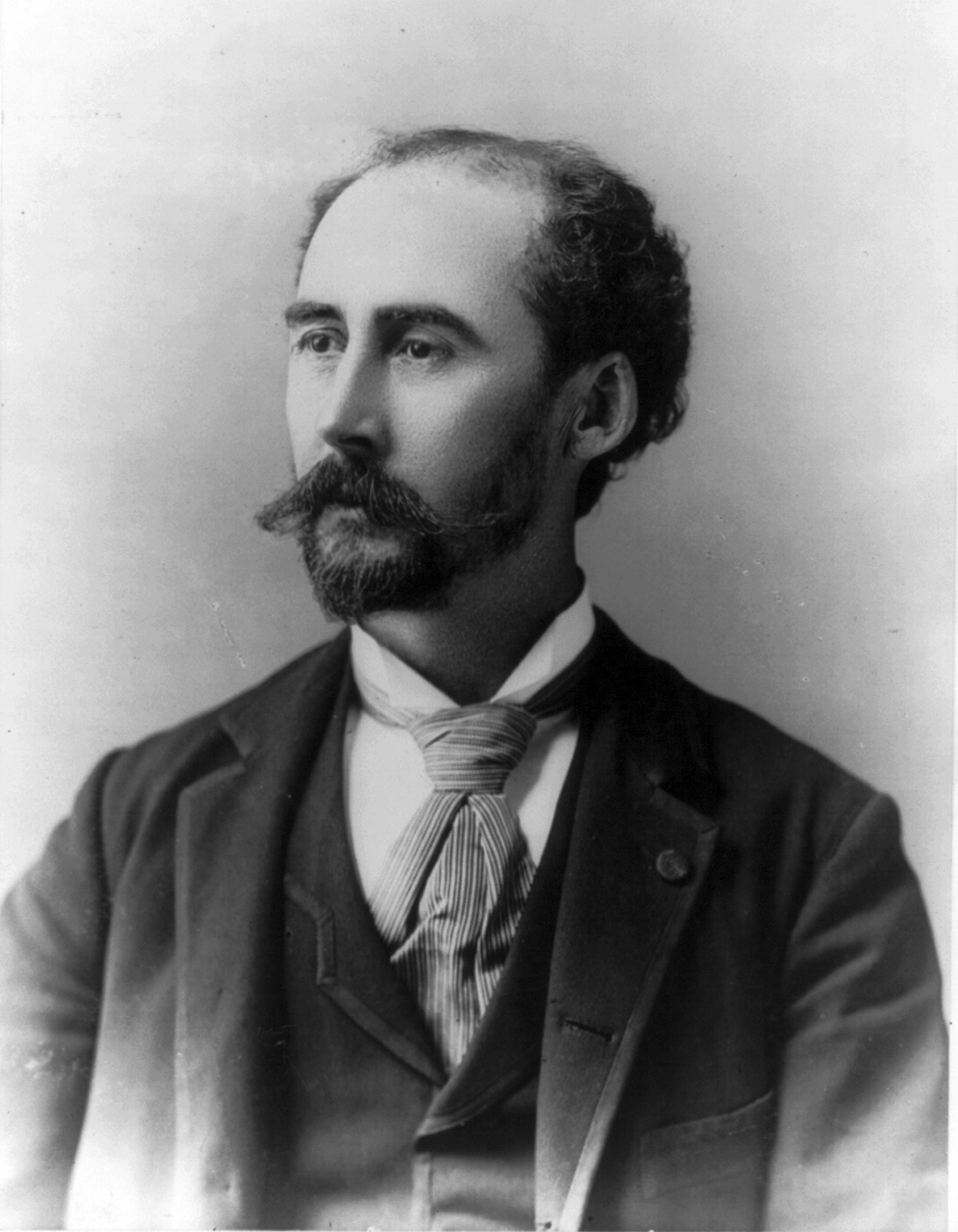In her book, The Language of Landscapes, Anne Spirn writes about “landscapes as a continual dialogue between a place and those who interact with it.” She states, “Landscapes have a context in which they reside and are experienced; they have a language that can be read more naturally than a book…”
William Henry Holmes’s landscape depictions are viewed as some of the most beautiful, highest-quality landscape renderings ever done of the West. His exquisite, enlightened drawings were the basis for a great deal of information in F. V. Hayden’s survey reports presented to Congress and in varied publications.
W.H. Holmes was born on a farm in Ohio, in 1846. His mother died when he was ten. As a child, Holmes had a passion for art and his father indulged his talent. In 1870, Holmes taught geography, natural history, drawing and painting at the McNeely Normal School. In 1871, he moved to Washington to study under the painter, Theodore Kauffman. His artistic talent soon came to the attention of the scientists at the Smithsonian Institution, notably Fielding Meek who employed Holmes to draw and sketch fossil shells.
This experience led to an appointment as artist to the U. S. Geological Survey of the Territories under F. V. Hayden. Holmes accompanied the survey team to Yellowstone National Park in 1871. Once on the survey, Holmes worked as a geologist and a cartographer as well as a sketch artist.
Holmes worked closely with photographer, Wm. H. Jackson. The high point of Hayden’s 1873 expedition was the discovery of the Mount of the Holy Cross. Its exact position was unknown and no one had ever recorded the mysterious markings of the peak. Jackson and Holmes, both fearless mountain climbers, spent a cold night without food, water or tents on Notch Mountain in order to furnish concrete visual evidence of this natural wonder. Holmes presented a remarkable and beautiful watercolor of The Mount of the Holy Cross to Jackson as a wedding gift.
While working in the Elk Mountains of Colorado, Holmes sketched the Maroon Bells, Teocalli, Italian, Gothic and Whiterock Mountains, the East River and Brush Creek valleys. He observed and interpreted the structure and origin of the Ragged Mountains. Hayden wrote, “Mr. W. H. Holmes also made numerous panoramic sketches from the high peaks . . . the value of the report is greatly increased by the beautiful and accurate sketches and sections from the results of his skill”.
During the 1870’s, Holmes gained a national reputation as a scientific illustrator, cartographer, archeologist and geologist. Holmes helped to produce Hayden’s greatest achievement: The Geological and Geographical Atlas of Colorado. He gave dazzling proof of his unique skills as an artistic geologist and a geological artist by rendering in panoramic views, several of the more dramatic alpine scenes of the Colorado landscape. His triptych panorama of the Grand Canyon from Point Sublime is a masterpiece of American scientific illustration.
From 1902 until 1909, he served as Director of the Bureau of American Ethnology succeeding John Wesley Powell. In 1920, Holmes became Director of the National Gallery of Art. He died in 1933. His paintings combined poetic mood with a scientist’s eye for the panoramic grandeur of the West.

